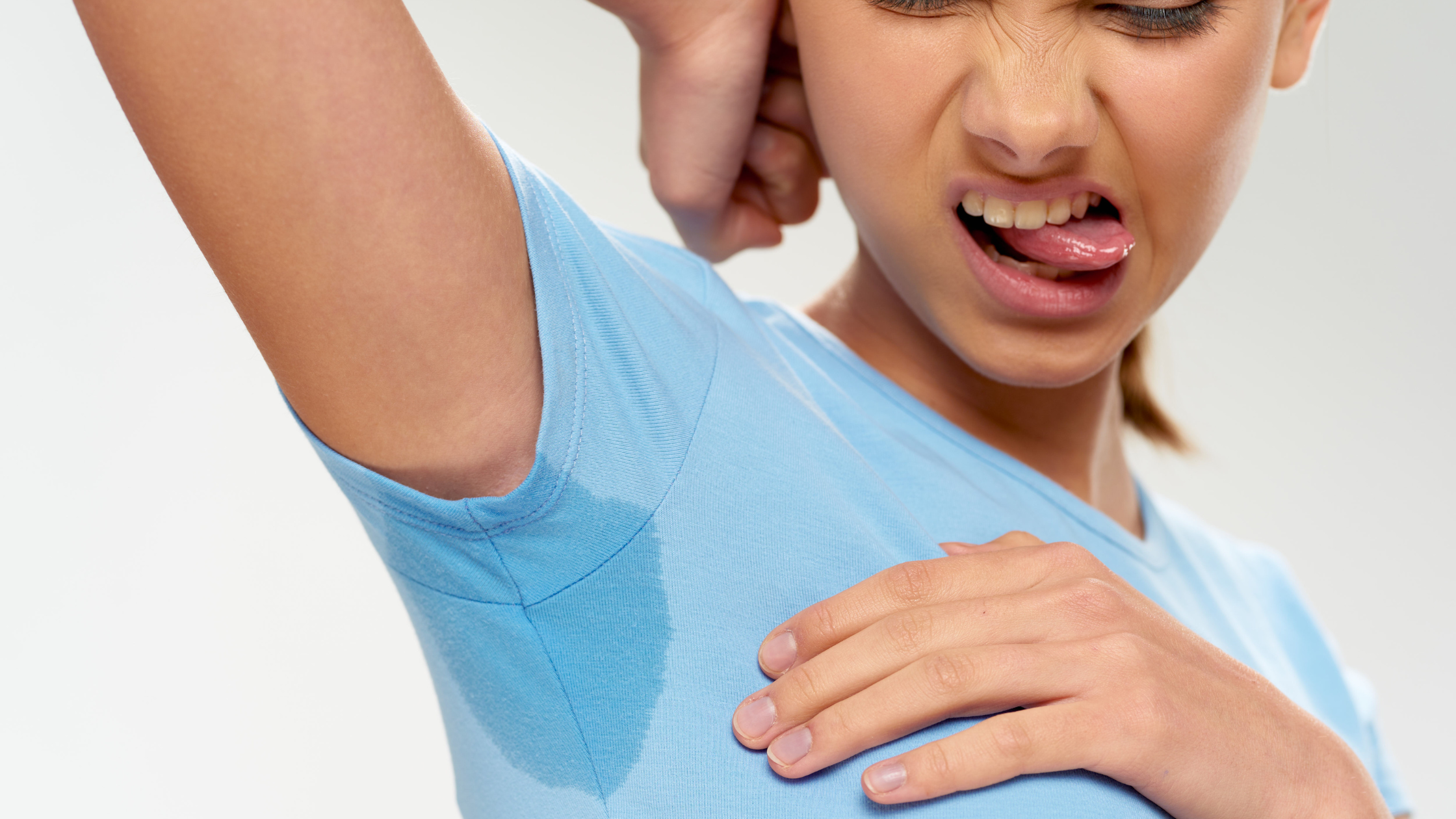Hyperhidrosis: a sticky, sweaty situation
Hyperhidrosis: a sticky, sweaty situation
Have you ever suffered from embarrassing sweat stains on your shirt?
Do you shy away from social situations?
Or fear shaking hands due to super sweaty palms?
You might have hyperhidrosis.

Hyperhidrosis is a medical condition; its primary symptom is excessive sweating beyond what is required to regulate body temperature. It’s estimated that this condition affects nearly 3% of the population. It impacts men and women equally.
Hyperhidrosis can be either generalized (all over the body) or localized to a particular area like the hands, feet, armpits, or face. It can be triggered by anxiety, foods, drinks, smells, and even slight temperature changes.
Managing hyperhidrosis
Regardless of the cause or the body site affected, patients with hyperhidrosis look for answers for this troubling and often ‘life-interrupting condition. Luckily, we have more options for management today than ever before!
My primary recommendations for hyperhidrosis patients:
- Carefully read the label on what you put on your sweaty parts each day.
- When purchasing an antiperspirant, make sure it contains maximum-strength aluminum chloride.
- Use your antiperspirant twice a day for better control.
- While a deodorant might help you smell better, it doesn’t block sweat.
Hygiene for hyperhidrosis patients
Cleansing our sweaty parts, specifically the armpits, is incredibly important when dealing with hyperhidrosis.
Patients who suffer from hyperhidrosis often fear that they smell bad. Therefore, they have developed cleaning habits that render the antiperspirant less effective. The active ingredient in antiperspirants, aluminum chloride, works by binding to our own salt produced in sweat. When the two salts meet in the sweat duct, a ‘salt plug’ is formed. That salt plug can last for several days if not disturbed. Many of my patients report scrubbing their armpits several times a day to keep the area clean or free from odor. Sadly, this excessive cleaning actually renders the antiperspirant ineffective since it dislodges the salt plugs.
The best method: use an aluminum chloride-based antiperspirant twice daily, gently cleansing the armpits and other affected areas once daily, and avoid scrubbing.
Treating hyperhidrosis
When over-the-counter antiperspirants and hygiene modifications aren’t enough, there are many treatment options for excessive sweating.
Prescription Antiperspirants
Prescription-strength and clinical-strength antiperspirants can help manage hyperhidrosis. Certain-Dri is an OTC product with 12% aluminum chloride, whereas the prescription Drysol has up to 30%.
Iontophoresis
Iontophoresis is another option for the management of hyperhidrosis. This method utilizes a small electrical current that runs through water which, over time, inhibits the secretion of sweat. These devices are available over-the-counter and by prescription. It’s essential to have a good understanding of the proper use of these products. Water and electricity….well, you wouldn’t want to get the shock of your life while trying to stop sweat production!
Injectables
Botulinum toxin, or Botox, is another option for excessive sweating. It's FDA-approved for the treatment of hyperhidrosis of the armpits but is often used off-label for the palms and soles. This remedy can be costly, over $1,000 per treatment, and usually has to be repeated every 6 months.
Oral medications
Anticholinergic drugs are prescription medications that can be used to stop excessive sweating. These medications can have a lot of undesirable side effects, so they are not for everyone. These side effects include dry eyes, dry mouth, blurred vision, irregular heartbeat, and difficulty with urination. Very few patients last long on these meds because the side effects often outweigh the benefits.
Surgical interventions
There are surgical options for hyperhidrosis. These interventions are a last resort as they come with risks. One procedure used cuts or scrapes out the sweat glands from the problem areas. Another method severs the nerves that innervate the sweat glands in the armpits.
Sadly, most patients who have had these surgical procedures suffer from compensatory sweating, which occurs when the body stops sweating in one area but starts sweating in another, like the face or the scalp.
Medicated towelettes – a new option!
And finally, there is a new FDA-approved towelette called Qbrexa. This is a first-of-its-kind topical anticholinergic approved for the treatment and management of excessive underarm sweating in patients 9 years of age and older. Qbrexa has been available for a few years and has helped many of my patients with hyperhidrosis.
If you suffer from excessive sweating, book an online appointment with one of our board-certified dermatologists to learn which option is right for you. Our providers can help you look forward to enjoying summer activities and no longer worry about the sticky, sweaty problems of hyperhidrosis.
 By
By


